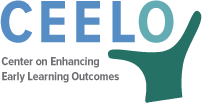 Shared action begins with a shared vision. A shared vision within and across state and local agencies succinctly captures what is wanted and needed. The declarative statement can be considered the “desired state” of a community whereas a mission typically addresses the purpose, authority and role of an SEA or LEA in realizing the vision. Strong vision statements are concise, understood and shared, broad enough to include diverse local perspectives, inspiring, and easy to communicate.
Shared action begins with a shared vision. A shared vision within and across state and local agencies succinctly captures what is wanted and needed. The declarative statement can be considered the “desired state” of a community whereas a mission typically addresses the purpose, authority and role of an SEA or LEA in realizing the vision. Strong vision statements are concise, understood and shared, broad enough to include diverse local perspectives, inspiring, and easy to communicate.
How are vision statements collectively developed? Collective leadership requires collective thinking and commitment. The goal of a shared vision statement is to cultivate a sense of ownership, not buy-in. Nagy & Fawcett highlight a number of things to consider:
- Learn what is important to people in your community: conduct listening sessions and focus groups to gather ideas, thoughts and opinions; obtain interviews with leadership and service positions.
- Decide what to ask: What is your dream for this community? What change would you like to see? What do you see as the major problems? What are your community’s greatest assets? What would success look like?
- Convene stakeholders to share common themes: What did you learn from discussions with community members?
- Propose a vision statement incorporating key themes for reactions and revision: Does this get to it?
- Hold it up against filters: Will it draw people to common work? Does it give hope for a better future? Will it inspire community members to realize their dreams through positive, effective action? Does it provide a basis for developing the other aspects of your action planning process?
How will we know we got it right? Another helpful strategy to test whether the vision goes right to the core is to ask the Five Whys (Toyoda). Five Whys is an iterative interrogative technique used to explore the root concern underlying a particular issue by repeating the question “Why?” Why is this important? Why is this the ultimate outcome we want to have? Each response forms the basis of the next question. When no further responses can be offered, it is final.
How do vision and mission statements differ? Mission statements build from a vision statement, stating the purpose of a team or agency’s work. Mission statements tend to be stable and clarify what role an entity plays in achieving the vision. Mission statements also relate to the authority, roles, and tasks of an organization. When a mission does not connect to a vision, it indicates a mismatch of purpose and contributions are likely to be less intentional, relevant and impactful. When aligned, missions of contributors are complementary and focused, challenges once deemed insurmountable by individual contributors can be achieved.
Vision and mission statements should be displayed prominently and revisited at the beginning of each meeting. These statements serve as a guiding light to remind you and your colleagues why your work is important.
Resources
- Proclaiming Your Dream: Developing Vision and Mission Statements (Nagy & Fawcett)
- Developing a Vision and a Mission (Gabriel & Farmer (2009), ASCD)
Activities
